Mastering Toilet Blockages: No Plunger Needed
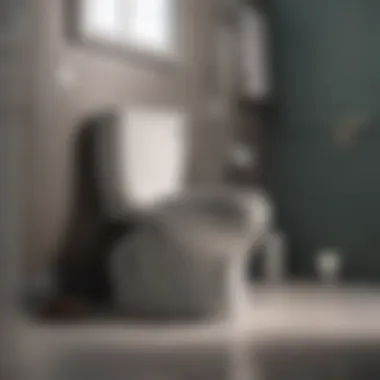
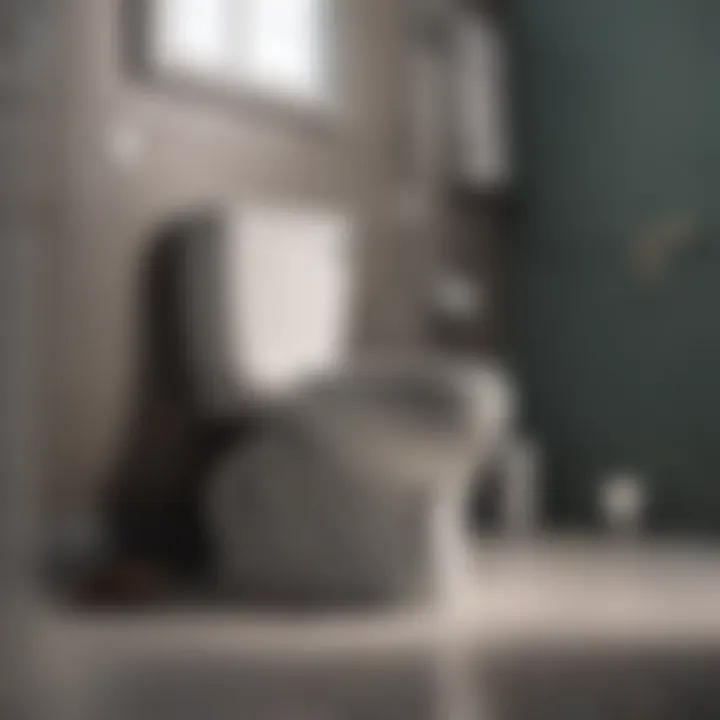
Intro
A blocked toilet presents an immediate challenge in any home. When faced with this inconvenient problem, the absence of a plunger can exacerbate the situation. Homeowners must quickly adapt and improvise effective solutions. This article explores various alternatives, offering practical methods for resolving the issue. It focuses on techniques that utilize everyday items, preventive measures that can be adopted, and maintenance routines that minimize future risks.
Understanding the underlying causes of toilet blockages is essential. This enables one to take informed steps towards resolution. The strategies outlined will empower readers with knowledge, allowing them to tackle such plumbing headaches efficiently while appreciating the importance of a well-maintained home.
Architectural Inspiration
While dealing with a practical issue, it is worth reflecting on the architectural context of the space involved. Toilets and bathrooms are often overlooked during design discussions.
Overview of Design Styles
Different styles of home design influence how bathrooms are perceived and their functionality. Modern, minimalist designs favor clean lines and efficient use of space. This style often incorporates smart materials that resist stains and blockages. Traditional designs might embrace more ornate features, which can complicate plumbing maintenance but may offer aesthetic perks. Understanding these styles helps homeowners appreciate bathroom design's role in overall home infrastructure.
Innovative Materials and Techniques
Materials such as ceramic, porcelain, and even newer composites can affect a toilet's performance. Innovations in plumbing technology provide solutions that are both aesthetically pleasing and practical. For instance, low-flow toilets are not only eco-friendly but also reduce the likelihood of clogs when designed properly. Moreover, advancements in plumbing techniques range from the use of better pipe materials to innovative routes in plumbing layouts, reducing the chance of blockages.
Practical Solutions for Blocked Toilets
When faced with a blocked toilet, various household items can serve as effective alternatives to a plunger. Some strategies include:
- Baking Soda and Vinegar: This mixture can create a foaming action that may help to break down waste.
- Hot Water: Carefully pouring buckets of hot water into the bowl can help dislodge blockages if done gently.
- Wire Hanger: Straightening a wire hanger to create a makeshift tool can be useful for dislodging chunks of debris.
- Toilet Brush: Using a toilet brush may provide the necessary agitation to free the clog.
Preventive Measures
Preventing blockages involves a combination of habitual maintenance and mindful usage. Consider adopting the following practices:
- Regular Cleaning: Suds and residues from cleaning agents can accumulate.
- Mindful Disposal: Only flush toilet paper and human waste. Avoid flushing items like wet wipes and feminine hygiene products.
- Routine Inspections: Periodically check and maintain plumbing fixtures to ensure they are functioning optimally.
Culmination
Understanding Toilet Blockages
Toilet blockages are more than just a minor inconvenience; they can disrupt daily life and lead to serious plumbing issues. Understanding the causes and implications of a blockage is essential for any homeowner or design enthusiast. Gaining insights into these matters not only aids in timely interventions but also fosters a more informed approach to maintaining your plumbing systems. Familiarity with the common causes lays the ground for effective resolution techniques, enabling people to work through a blocked toilet scenario with greater confidence.
Common Causes of Toilet Blockages
To effectively navigate blockages, one must grasp their common causes. Each of these contributes in unique ways that affect how a blockage can be addressed.
Excessive Toilet Paper Usage
Excessive toilet paper usage is a primary culprit behind many household toilet obstructions. The nature of toilet paper – designed to break down in water – often misleads many into believing that more is better. Notably, using too much can overwhelm the toilet’s flush system, leading to accumulation and eventual clogging. This characteristic makes excessive toilet paper usage popular yet detrimental in various situations. The challenge lies in balancing comfort with caution, as the volume of paper can significantly influence blockage severity.
Foreign Objects
Foreign objects in toilets are not uncommon and can lead to unexpected blockages. Items such as toys, sanitary products, or any non-flushable objects can easily cause disruptions to the flow. The key feature of foreign objects is their lack of biodegradability, which prevents them from disintegrating like toilet paper. Understanding this aspect is crucial for preventing mishaps. Such blockages typically require more invasive solutions compared to those caused by paper, highlighting the need for vigilance in what goes down the toilet.
Clogs from Hair and Debris
Hair and other debris represent another significant cause of toilet clogs. These materials can accumulate over time, creating a dense mass that restricts water flow. The main characteristic of this type of blockage is its gradual formation; it often goes unnoticed until significant trouble arises. Clogs from hair and debris are frequently easier to prevent through regular maintenance routines. Taking measures to limit what enters the toilet, such as installing screens or cleaning more often, can be effective strategies against these kinds of blockages.
Key Takeaway: Being aware of common causes of toilet blockages empowers homeowners, providing them the knowledge to engage proactively in plumbing maintenance.
Immediate Response to Blockages
Addressing a toilet blockage promptly is crucial in minimizing the potential for further issues. The immediate response can prevent overflow or damage, which may complicate the scenario. Homeowners often panic at the first sign of a blockage, but understanding how to assess and act effectively provides a clear path forward.
There are several reasons why this phase is essential. Proper evaluation allows for the identification of the blockage's nature, which informs the appropriate remedial action. Taking stock of the situation can also help in gauging whether simple techniques will suffice or if professional help is necessary, saving both time and potential frustration.
Assessing the Situation


Assessment involves a careful observation of the blockage. This is not just about looking at the toilet; it entails a broader understanding of the plumbing system involved. Small blockages can sometimes be resolved quickly, but larger issues could signal more severe problems.
Identifying the Severity of the Blockage
Identifying the blockage's severity centers on symptoms such as water levels in the bowl, the speed of drainage, and any unusual noises. Recognizing these characteristics allows homeowners to categorize the problem better. For instance, if the water level rises alarmingly and does not drain, it indicates a more significant obstruction.
Knowing how severe the blockage is can dictate the chosen response. This information directly contributes to whether a DIY approach is enough or if calling a plumber is warranted. This ability to discern degrees of blockage becomes a beneficial aspect of managing toilet issues without the help of a plunger.
The unique advantage of this understanding is the ability to avoid unnecessary risks associated with trial and error. Ignoring a potentially severe blockage can lead to damage to plumbing, which is costlier to repair. It is beneficial to weigh the situation carefully before proceeding.
Deciding on the Best Course of Action
Once the severity is assessed, the next step is deciding on an effective course of action. This process involves weighing the various techniques available for clearing the blockage, considering both the tools at hand and the nature of the blockage itself.
The key characteristic of this decision-making process is adaptability. Each blockage is distinct, and flexibility in approach can lead to better outcomes. This choice becomes particularly important in a situation where a plunger is unavailable.
For example, if a blockage appears manageable, one might choose methods like hot water or dish soap. However, if signs indicate a more severe blockage, calling a plumber is generally the best approach. Therefore, a well-informed decision balances the effort required with potential risks and rewards.
Understanding these nuances allows for a straightforward navigation of blockage issues, preventing minor problems from escalating.
"The best solution often lies in a clear understanding of the situation rather than an immediate, instinctive reaction. "
Employing a keen eye for detail, and a thoughtful approach to decision-making positions homeowners to manage toilet blockages more effectively.
Techniques to Resolve Blockages
The discussion of techniques to resolve toilet blockages is pivotal in providing practical solutions when faced with a non-functioning toilet. These methods are not just about immediate relief but are also cost-effective and accessible alternatives when a plunger is unavailable. Each technique offers unique benefits, whether it’s minimizing damage, enhancing ease of use, or proving to be environmentally friendly.
Understanding these techniques allows homeowners to act swiftly and competently in handling a blocked toilet. Timely intervention can prevent further complications and high repair costs. By employing critical thinking and available resources, almost anyone can effectively alleviate a blockage.
Using Hot Water
Hot water can be a surprisingly effective remedy on a clogged toilet. Its utility lies in the science behind how heat affects materials. Pouring hot water into the bowl can help to dissolve any substances causing the blockage, especially when the blockage stems from organic matter or softer agents like soap.
To utilize this method:
- Heat a pot of water until it is steaming but not boiling.
- Carefully pour it from waist height into the toilet bowl. The height helps to create a bit of force on the water's entry.
- Wait for about ten minutes and check if the water drains normally.
Important Consideration: Do not use boiling water as it may crack the porcelain of the toilet, leading to expensive repairs.
Dish Soap Method
Dish soap can serve as a practical tool for resolving toilet blockages, particularly suitable when the clog is caused by paper or organic debris. The soap works by lubricating the pipes, making it easier for waste to move through. Furthermore, the surfactant properties of dish soap break down fat and other trapped materials, assisting in freeing the blockage.
To implement this method, follow these steps:
- Pour approximately half a cup of dish soap into the toilet bowl.
- Allow it to sit for about ten minutes. This waiting period ensures the soap has ample time to penetrate the clog.
- Follow up by applying hot water as described in the previous section to aid in flushing out the blockage.
Baking Soda and Vinegar
The combination of baking soda and vinegar is well-known for its cleaning properties, often overlooked in the realm of plumbing. This duo can create a reaction that combats blockages effectively. The baking soda works to neutralize odors, while the vinegar's acidity helps to break down grime in pipes.
For this method:
- Start by pouring a cup of baking soda directly into the toilet bowl.
- Follow this by adding a cup of vinegar.
- You will notice fizzing as the two ingredients react; allow this reaction to continue for about half an hour.
- Finally, flush the toilet. The reaction should have assisted in loosening the material causing the blockage.
These techniques are straightforward, cost-effective, and easily accessible, making them suitable for various situations homeowners might encounter. Each method emphasizes using common household items to address plumbing issues without professional assistance, empowering homeowners with knowledge and practical skills.
Additional Tools to Consider
In the quest to resolve a blocked toilet without relying on a plunger, utilizing additional tools can significantly enhance your chances of success. These tools can help you dislodge or remove any obstruction more effectively. Understanding the specific elements and benefits of each tool is vital to achieve the desired outcome and prevent further complications.
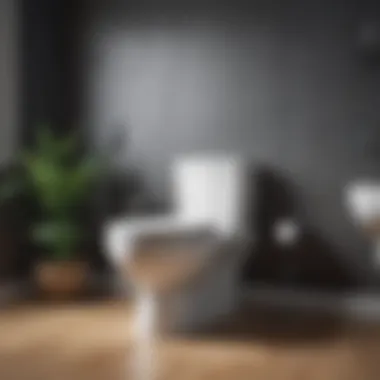
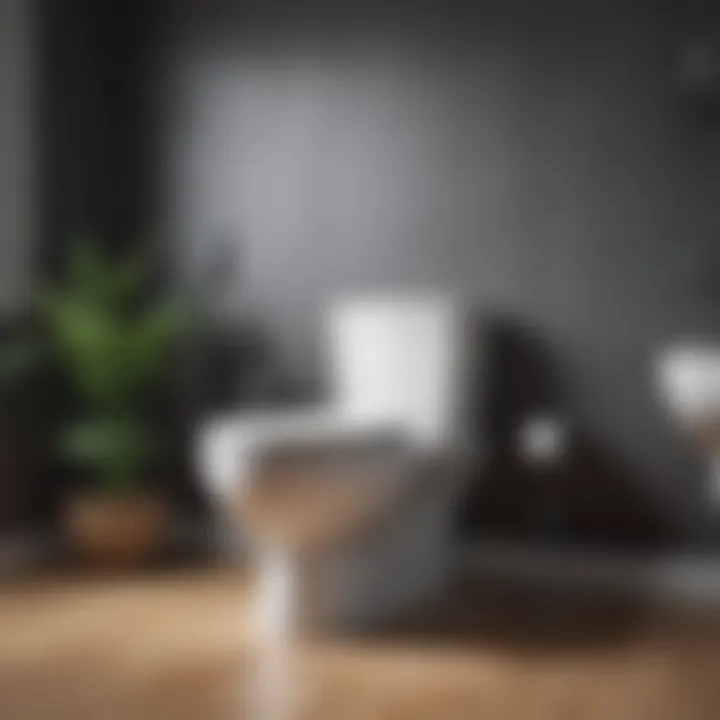
Wire Hanger Approach
One commonly overlooked method is the wire hanger approach. To implement this, locate a stiff wire hanger and carefully unravel it, creating a long, straight piece. The end should form a hook that can be manipulated into the toilet bowl.
When using the wire hanger, insert it into the toilet to reach the blockage directly. Gentle pressure should be applied while maneuvering the hook to dislodge the foreign object. This demand requires caution, as excessive force might inadvertently stall further progress or damage the toilet itself. If successful, you should feel resistance lessen as the object breaks free.
It's important to note that this method is not always suitable for every type of blockage. Testing the hook at different angles can provide better access to stubborn clogs. Be prepared for the possibility of grabbing onto undesirable materials, so wearing gloves during this procedure is highly recommended.
Wet/Dry Vacuum Usage
Another efficient tool for tackling toilet blockages is the wet/dry vacuum. This tool boasts versatility and power, making it ideal for a myriad of cleaning tasks, including plumbing issues. With a wet/dry vacuum, you can attempt to siphon out the blockage from the toilet bowl.
To begin, you should first position the vacuum nozzle inside the toilet as far as possible without forcing it. Ensure the vacuum is set to the liquid mode to prevent damages. Turn on the vacuum to create a powerful suction that may help dislodge the obstruction. During this process, be aware that it might take several attempts for the vacuum to effectively clear the blockage.
If you cannot remove the clog completely in one attempt, this method often frees up smaller debris, making future techniques much more manageable. However, ensure that you clean the vacuum thoroughly afterward, as it will likely contain unsanitary materials.
Manual Removal
In some cases, a direct approach may yield the quickest resolution. Manual removal is an option—albeit an unpleasant one—for less severe blockages that can be safely extracted by hand. Before you proceed, ensure you are equipped with sturdy rubber gloves and perhaps even a face mask to minimize exposure to any contaminants.
Once prepared, carefully plunge your hand into the toilet, reaching for the obstruction. Moving slowly helps prevent splashing and ensures you maintain control over your actions. If the blockage consists of materials like excess toilet paper, you should be able to remove it relatively easily. In more complex cases, consider if using a tool like a claw or tongs might provide better leverage.
"Attempting to remove an obstruction manually can be unsanitary but sometimes necessary. Always use proper precautions."
This method certainly comes with its risks, so only pursue it if you are confident in your ability to manage the situation without causing further issues. To summarize, while the methods described here may not be the most glamorous, they can be effective in navigating a toilet blockade without a plunger. Proper preparartion and a clear understanding of each tool's benefits are key to success.
Preventative Measures
Preventative measures are vital when addressing the issue of toilet blockages. Taking proactive steps can significantly reduce the likelihood of experiencing a blockage in the first place. This section examines specific actions that homeowners can implement to maintain their plumbing and minimize potential problems in the future. An awareness of these measures contributes not only to convenience but also enhances the overall functionality and aesthetic quality of the bathroom.
Regular Maintenance Tips
Routine Cleaning
Routine cleaning plays a crucial role in the effective management of toilet systems. By regularly cleaning the toilet, both the bowl and the surrounding area can be kept free from stains and buildup. This practice prevents debris from accumulating and potentially causing clogs. The primary characteristic of routine cleaning is its systematic approach. It is a beneficial choice because it helps detect minor problems before they escalate. Moreover, routine cleaning is straightforward and does not require specialized tools.
A unique feature of routine cleaning is the use of non-toxic cleaners that are eco-friendly. These cleaners can break down waste material without harming the plumbing. This process offers numerous advantages, including maintaining the integrity of pipes and promoting a healthier home environment. On the downside, neglecting routine cleaning can lead to stubborn stains or limescale buildup, making future cleaning efforts more labor-intensive.
Monitoring Usage
Monitoring usage of the toilet is essential in understanding its operational capacity. This practice involves being aware of what goes into the toilet and how much is flushed at a time. A key characteristic of monitoring usage is its focus on prevention and responsible habits. It serves as a beneficial measure because it encourages individuals to be mindful about flushing only the appropriate waste and reducing excessive toilet paper usage.
One unique aspect of monitoring usage is establishing a household guideline for the family or roommates. This collaboration ensures everyone is aware of best practices related to toilet usage. Its advantages include reducing the chance of blockages and maintaining a cleaner bathroom. However, the potential downside is that these guidelines require consistent reinforcement, especially in a busy household where habits can sometimes lapse.
Effective maintenance starts with you. Simple changes can prevent bigger problems later.
Understanding Risks and Misconceptions
Understanding risks and misconceptions surrounding toilet blockages is essential for homeowners. Many individuals resort to quick fixes that not only fail to resolve the issue, but can also lead to more significant problems. This section will delve into specific elements that highlight the importance of recognizing risks and understanding myths that may impede effective action during such emergencies.
Potential Damages from Overuse of Chemicals
Chemical drain cleaners can seem like an easy solution for a blocked toilet. However, overuse of these products may inflict damage not only on the toilet itself but also on the plumbing system. The harsh chemicals can corrode pipes over time, leading to leaks and other costly repairs. It is also important to note that these chemicals can cause damage to fixtures made of sensitive materials.
Moreover, the immediate improvement may give a false sense of security. The blockage may seem resolved temporarily, but the underlying issue might still persist. It is prudent to consider alternatives that are less harmful to your plumbing, such as enzymatic cleaners that target organic blockages without the risk of corrosion.
Chemical solutions can create more issues than they solve.
Myths about DIY Remedies
There are many common myths regarding DIY remedies for toilet blockages. One prevalent belief is that boiling water effectively clears blockages, but this can actually worsen the situation. For instance, using boiling water on a porcelain toilet is risky as it can crack the bowl due to extreme temperature changes.
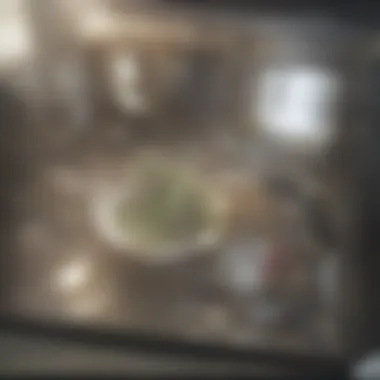

Another misconception lies in the assumption that using excessive dish soap will solve blockage issues. While it can help in some cases by lubricating the pipes, too much soap can lead to buildup, creating further complications.
Recognizing these misconceptions allows individuals to approach toilet blockages with the right mindset and tools. Exploring accurate methods of mitigation leads to more effective and sustainable solutions.
When to Call a Professional
Understanding when to call a professional plumber is crucial when faced with a toilet blockage. While many blockages can be resolved using DIY methods, certain situations may require expert help. Knowing when to seek assistance can save time, prevent further damage, and ultimately keep your restroom functioning efficiently.
Some key elements to consider include:
- Severity of the Blockage: If your attempts to clear the toilet are not successful after several different methods, it may indicate a more serious issue. This might be a deeper clog in the drainage system or even a problem with the sewer line itself.
- Recurring Problems: If you find yourself facing toilet blockages frequently, it suggests an underlying issue that your regular efforts cannot rectify. A professional can inspect the plumbing system to uncover any deep-rooted problems.
- Unusual Symptoms: Odd signs, such as gurgling sounds in the toilet or drains, or water backing up elsewhere in the house, could point to a significant blockage. These warnings are best handled by a qualified plumber, who can perform a comprehensive evaluation.
"If you notice multiple toilets in your house backing up or the water level rising excessively, it’s time to call for professional help."
Signs a Professional is Needed
Identifying the signs that indicate professional help is warranted is essential for effectively addressing toilet blockages. Here are some specific indicators:
- Incomplete Flushes: If the toilet does not fully flush despite attempting different techniques, this may signal a significant blockage.
- Water Level Fluctuation: Sudden changes in water levels, either too high or too low, may point to issues beyond your ability to resolve.
- Bad Odors: Persistent unpleasant odors from your toilet might suggest a blockage in the drainage system that needs a professional's attention.
- Multiple Fixtures Affected: If you notice that other plumbing fixtures, such as sinks or showers, are affected at the same time, this might mean a main sewer line issue.
- Long Duration of the Problem: If the blockage persists for an extended period despite several DIY attempts, it’s wise to consult a professional.
By recognizing these indicators early, you can prevent minor blockages from evolving into larger, costlier plumbing issues.
Emphasizing Aesthetic Value in Plumbing Maintenance
In modern home design, plumbing often takes center stage when we consider functionality and efficiency. However, it is crucial to address the aesthetic value of plumbing maintenance alongside its technical aspects. The appearance of plumbing fixtures can significantly affect the overall atmosphere of a bathroom or kitchen, influencing a visitor's first impression. When homeowners opt for attractive plumbing solutions, they also enhance the style of their spaces while ensuring that these installations serve their intended purpose effectively.
The aesthetic aspect of plumbing is not just about making things look good; it also incorporates functionality. When working plumbing integrates well with the design, it contributes to a seamless user experience. This dual focus enhances the practical application of plumbing while keeping in mind the principles of design and comfort.
The Role of Aesthetics in Home Maintenance
Combining Functionality with Design
Combining functionality with design is essential for effective home maintenance. This intersection enhances the usability of fixtures while creating a visually appealing environment. For instance, choosing faucets that embody both style and convenience can elevate a space's aesthetics without compromising on performance. Modern designs often incorporate sleek lines, effective water flow controls, and ergonomic shapes that cater to users' needs.
Key characteristics of this combination include a variety of finishes and styles that allow homeowners to express their personality. For example, matte black or brushed nickel finishes can add a contemporary touch to traditional spaces. These options are not only aesthetically pleasing but also practical in terms of resistance to fingerprints, which makes maintenance easier.
However, the challenge lies in selecting pieces that align with existing decor. A well-chosen fixture can serve as a focal point, while a mismatched piece can detract from the overall look. Keeping this in mind ensures that plumbing maintains its aesthetic integrity while functioning flawlessly.
Creating a Cohesive Bathroom Space
Creating a cohesive bathroom space is another significant consideration in plumbing maintenance. Unified design elements play a vital role in ensuring that all components work together, from fixtures to tiles, creating a harmonious and stylish environment. This cohesiveness can be achieved through patterns, color palettes, and consistent materials that resonate throughout the bathroom.
The key characteristic here is symmetry and balance. For example, matching the shape of sinks and faucets can enhance the overall appearance and give a refined look. Additionally, coordinating colors in various fixtures creates a sense of continuity, enhancing the eye's journey through the space.
The unique feature of a cohesive design is its ability to impart a feeling of serenity and organization. A well-designed bathroom minimizes visual clutter, making it appear larger and simultaneously more inviting. However, achieving this unity requires thoughtful consideration and planning, as care must be taken not to over-saturate the space with colors or styles that clash.
In summary, integrating aesthetic sensibilities into plumbing maintenance broadens the scope of home design, encouraging a balance of beauty and utility that resonates with homeowners and guests alike.
Finale: Simple Yet Effective Solutions
In addressing a blocked toilet without a plunger, it is vital to emphasize simple yet effective solutions that can save time and minimize stress. Understanding various techniques and tools allows for a more proactive approach to home maintenance. Each method presented in this article aims to empower homeowners and design enthusiasts alike, providing insights into how to handle a common household issue with confidence.
These techniques not only resolve the immediate problem but also serve as a foundation for preventative measures. Regular maintenance can greatly reduce the likelihood of future blockages. Thus, engaging with the material presented gives readers the ability to manage their plumbing effectively, promoting not only functionality but also aesthetics within the home environment.
The considerations discussed are essential. Each outlined method is easy to implement and requires minimal resources, making it accessible for anyone. By being informed, homeowners can mitigate potential damages and restore their toilets to full working order without reliance on commercial products or professionals, when unnecessary.
Furthermore, incorporating approaches that consider both repair and the overall aesthetic of the bathroom aligns with broader trends in home design where functionality meets style. Thus, it is crucial to grasp not only how to fix a blockage but also to appreciate how careful management can enhance a home's appeal.
Simple solutions often better reveal the beauty in systems that function seamlessly.
Summary of Techniques
Throughout this article, several practical techniques have been detailed to help navigate a blocked toilet effectively. Here is a summary for quick reference:
- Using Hot Water: Pouring hot water can help dissolve certain clogs, especially those caused by organic materials.
- Dish Soap Method: Introducing dish soap can lubricate the blockage, making it easier to flush away.
- Baking Soda and Vinegar: These common household items create a chemical reaction that can break down tough clogs.
- Wire Hanger Approach: A makeshift tool that can dislodge solid blockages by physically reaching into the toilet.
- Wet/Dry Vacuum Usage: Ideal for sucking up minor obstructions without causing damage to the plumbing system.
- Manual Removal: In extreme cases, carefully removing the toilet may be necessary to clear the blockage.
By understanding these methods and their applications, homeowners can handle toilet blockages proactively. This knowledge equips them not only to resolve issues but also to appreciate the importance of maintaining a well-functioning plumbing system.







